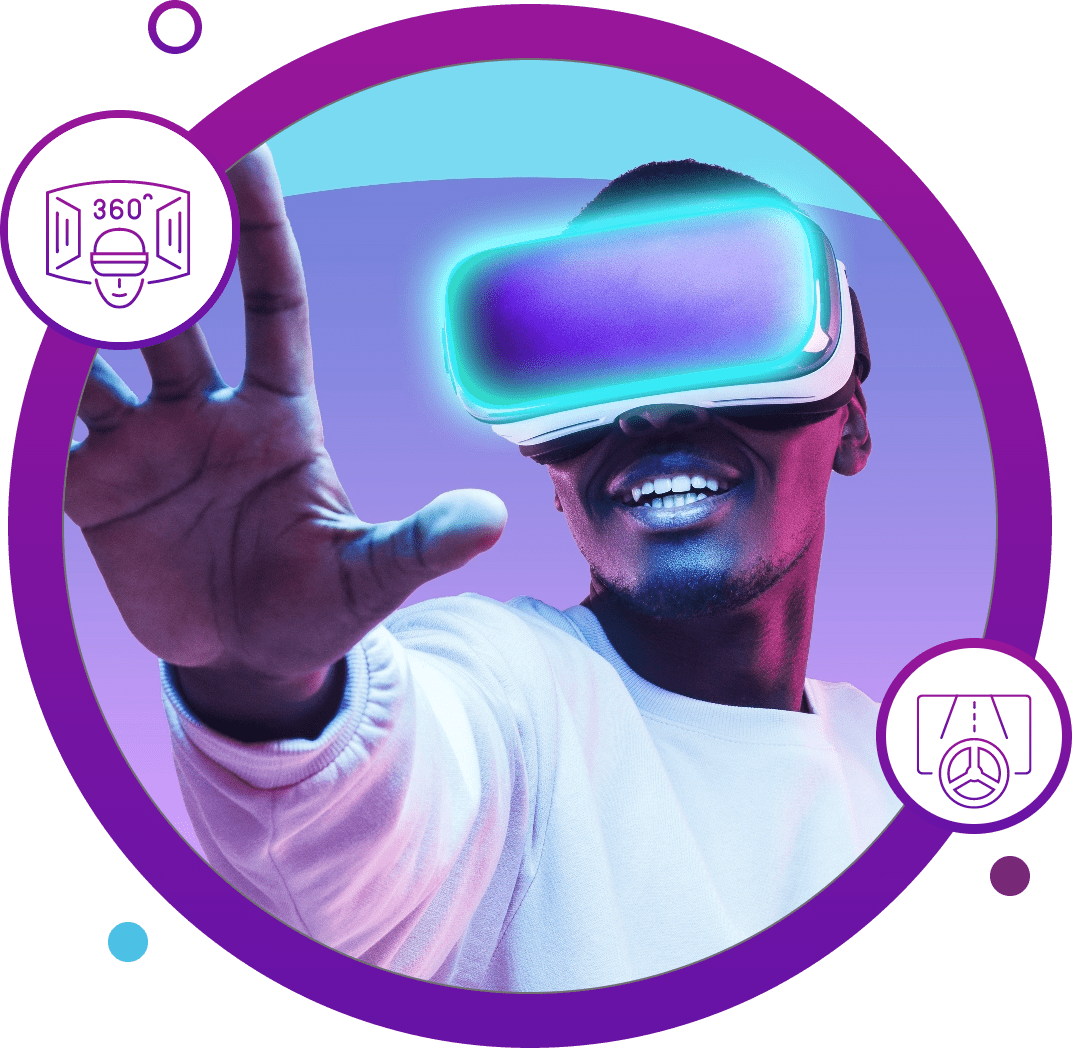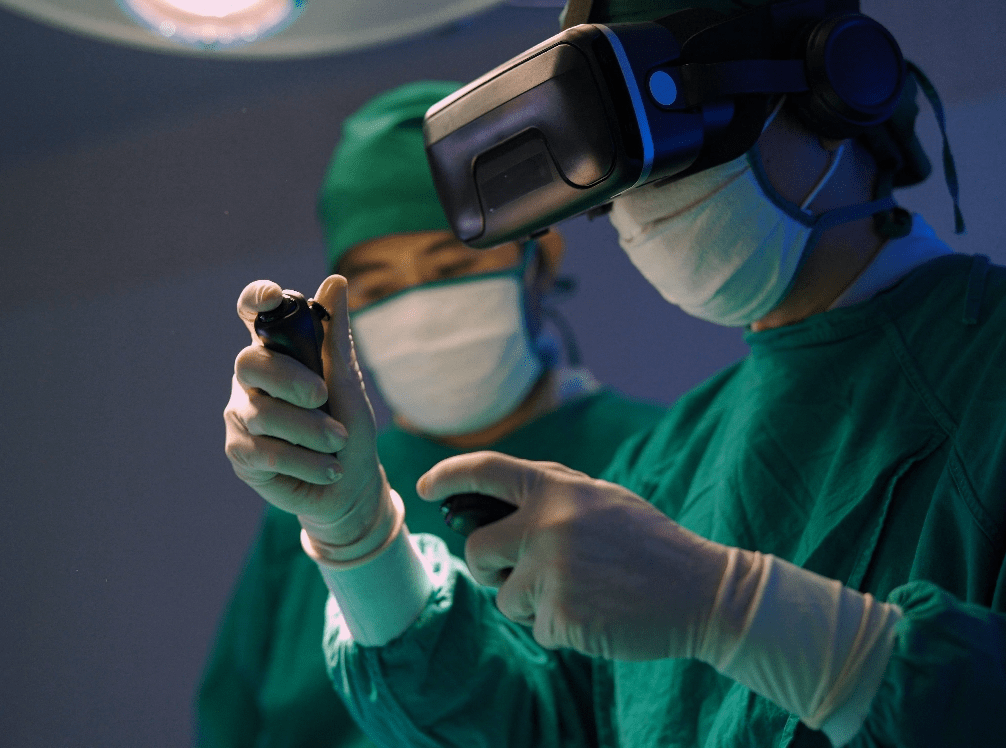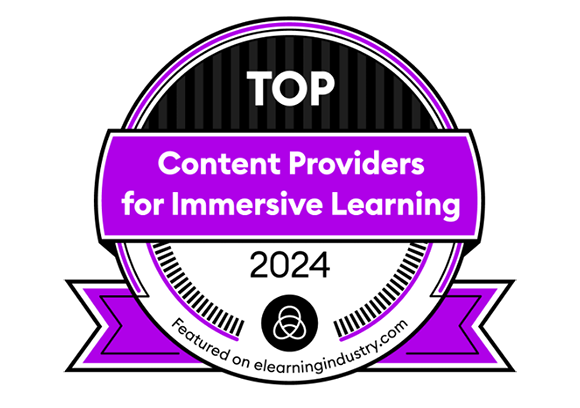Home :: Immersive Learning ::
Augmented Reality (AR)
Immerse your audience in interactive real-world environments and revolutionize your training

An Augmented Reality (AR) experience generates a composite view for the user combining the real world with a computer-generated virtual scene that augments it with additional information. AR environments are highly reactive and dynamic – offering information about your environment in real time. AR has practical, real-world applications in many industries – and a lot is being done to leverage AR in designing learning and training programs.
Our AR solutions enable you to augment practical training requirements, expand your training team’s reach, break down geographical barriers, compress training time, and reduce overall costs.
What is the value that AR brings to corporate training?
AR can boost learner engagement and retention by allowing learners to interact with content more proactively and genuinely, rather than being passive recipients of knowledge.
AR covers a wide range of fields, and its concepts can be used for any domain, subject, age group, or training program. It promotes ‘learn by doing’ and challenges learners to explore new points of view, driving intrinsic motivation and influencing behavior. It creates a safe training environment with simulations that allow potentially critical activities to be practiced without any negative impact.
How can EI help you leverage AR in your training strategy?
We have been progressively designing learning strategies where AR can prove to be effective. AR can sometimes be the primary mode of training and at other times, supplement the primary learning path.


AR to enhance Blended Classroom Training
Learners can use associated AR Mobile Apps to view job aids, worksheets, examples, and assignments using AR content in the classroom environment.

Gamified AR
AR and games are a perfect pair. Instead of fictional characters, employees can interact with customers and objects that they typically find in the workplace.

Real-world Simulations with Interactive Objects
You can now gather analytics based on learners’ eye contact and movements. Such detailed insights allow you to work on improving the effectiveness of your training programs.

Leverage Detailed Analytics to Improve Training Effectiveness
Eye contact and movements. Such detailed insights allow you to work on improving the effectiveness of your training programs.

High-risk eLearning Scenarios in Real-time
Medical practitioners and machine operators can practice complex procedures in a safe environment (all in real-time) so that employees experience the same pressure and stress.

Immersive Stories
eLearning professionals can weave in stories that draw in online learners in and help make them connect with the main character. Just imagine amplifying those emotions by putting online learners into the story.

Three-dimensional Learning Models
Learners can manipulate three- dimensional visualizations so that they can view it from every angle. They can also even interact with hotspots to learn more about the individual components.

AR for Performance Support
AR aids can be placed on certain equipment’s for such instances in order to provide employees with immediate guidance when required.
Our AR solutions provide scalable learning in the sense that learners only require mobile devices and Augmented reality apps to employ AR concepts in learning, without having to purchase additional gadgets and materials.
- Banking, Financial Services, and Insurance
- Healthcare, Medical Devices, and Pharmaceuticals
- Retail and Consumer Goods
- Government Agencies and Non-Profits
- Manufacturing and Logistics
- Media and Entertainment
- Airlines, Aviation, and Aerospace
- Beverage and Tobacco
- Automotive Sector
- Sales Training
- Compliance Training
- Induction and Onboarding Training
- Leadership Training
- Professional Skills Training
- Product Training
- Soft Skills Training

Ranked as a Top Content Provider for Immersive Learning in 2024

Best Custom Content
Case Studies

How a Retail Giant Built an Awareness Training on Protecting Goods Through Powerful Storytelling

How a Leading Intergovernmental Organization Created a Learning Platform and Boosted Training Impact and ROI

How an FMCG Revolutionized Mentoring Programs for Their Leaders with a Microlearning Solution